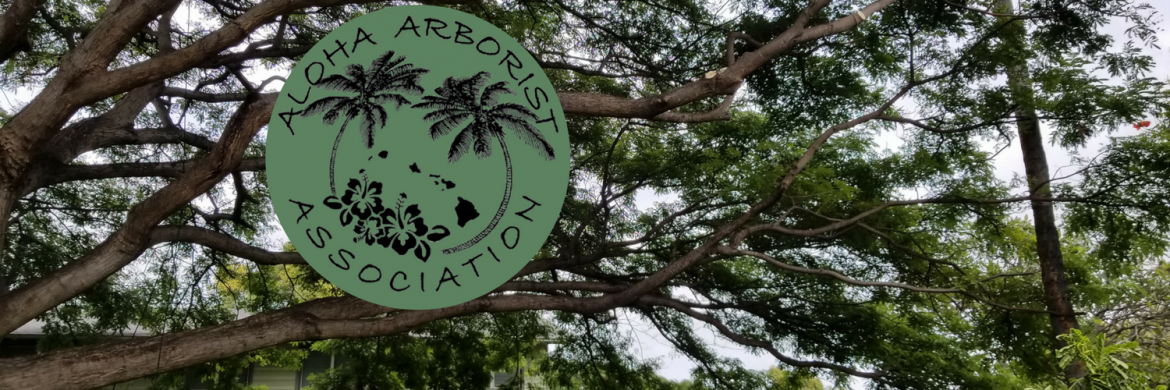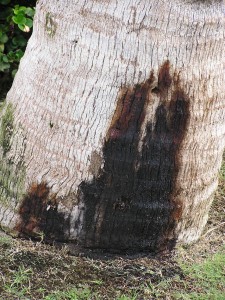- Cause: Chalara paradoxa, a mainly soilborne plant-pathogenic fungus
- Hosts: Areca catechu, Barhea edulis, Caryota spp., Cocos nucifera, Elaeis guineensis, Phoenix africanus, Phoenix canariensis, Phoenix dactylifera, Raphis sp., Roystonea elata, Sabal palmetto, Sygarus romanzoffinia, Washingtonia filifera
- Symptoms: black stain coming from a hole or wound and seeping down the coconut stem
- Management: Prevention and avoidance – don’t injure trunks, avoid contact of soil on wounds, avoid irrigating trunk, inspect regularly for symptoms, minimize stress by proper nutrition and moisture and avoid cosmetic pruning. Avoid using spikes to climb the palms.
- Treatment: (1) Early infections – chisel or scrape out rotten portion, treat with fungicide and tar. Burn/destroy chiseled pieces. (2) Advanced infections – remove palm and destroy.
- Replanting: avoid replanting in same spot. Consider treating or replacing soil.
Source: Stem Bleeding of Coconut Palm, Dr. Scot Nelson, University of Hawai’i at Manoa, College of Tropical Agriculture and Human Resources, Cooperative Extension Service, Plant Disease PD-30, September 2005.

